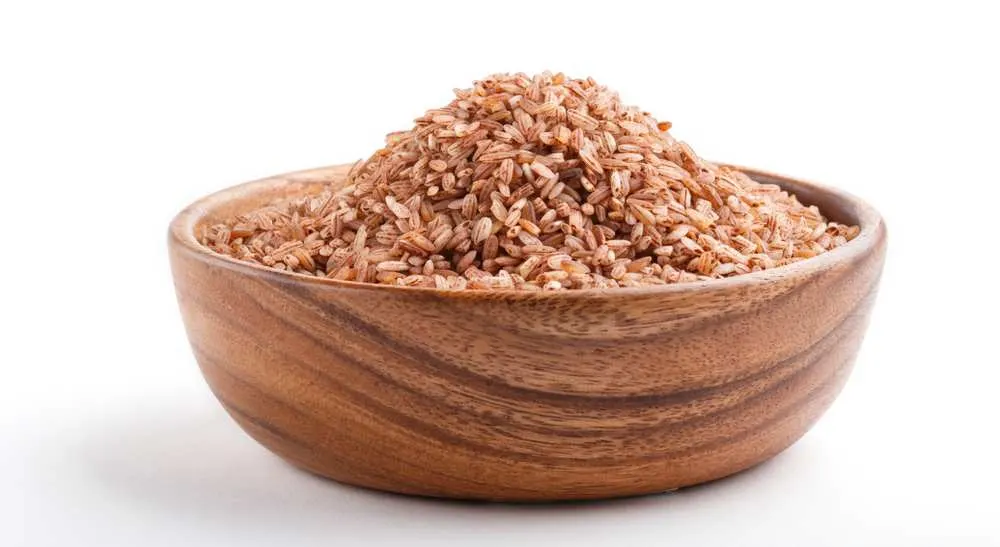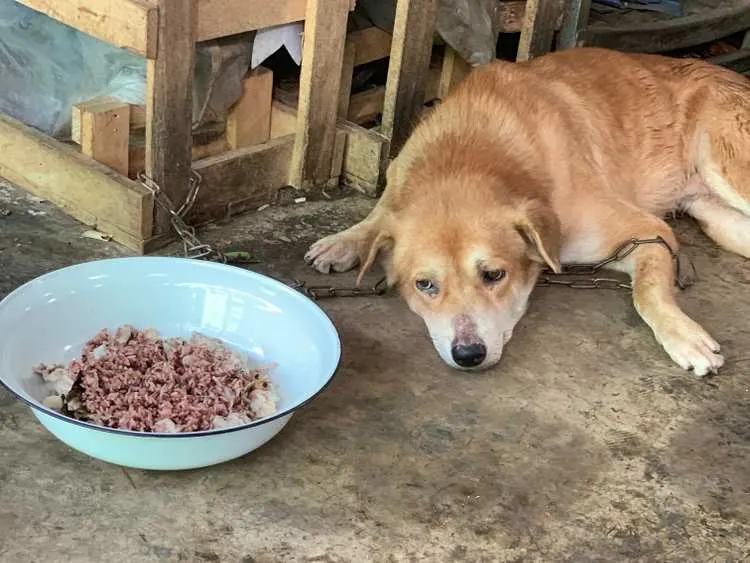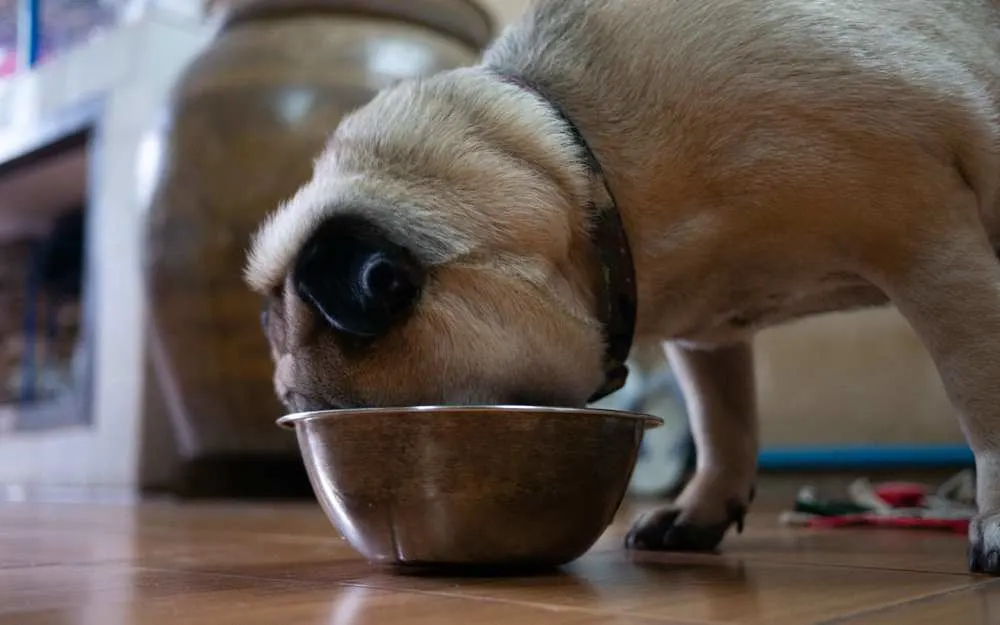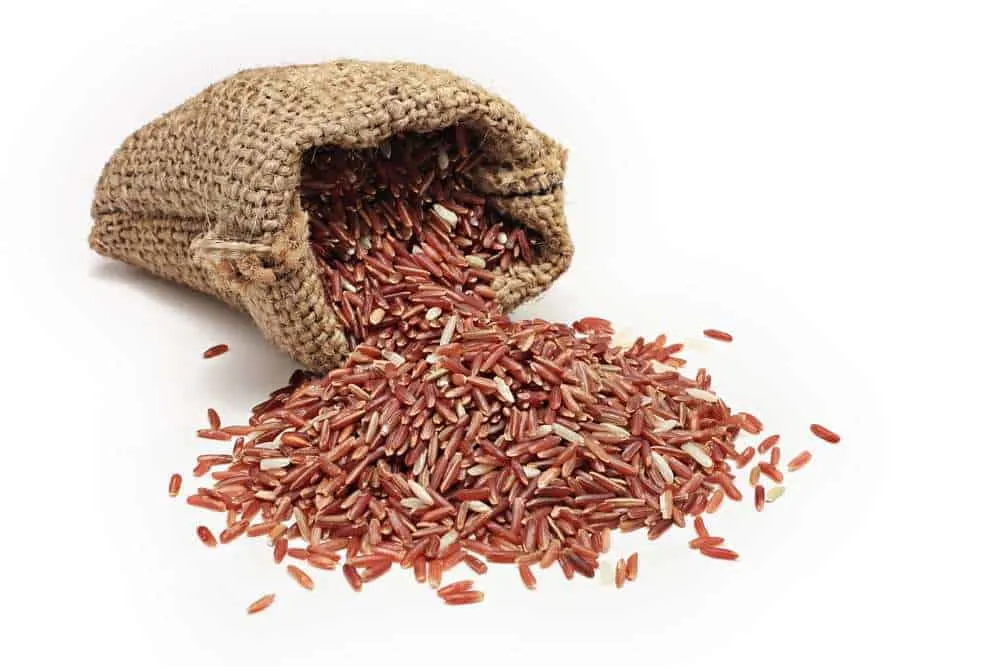Leaving Chinese takeout on the living room table was not a good idea, as Tobby has eaten half of your dinner. Now the big question is bothering you – can dogs eat brown rice?
We all know that rice yields several health benefits for humans, as it is full of valuable nutrients. However, brown rice is generally high in fiber and carbohydrates, and too much of it can be harmful to your dog. But how come then commercial dog foods include brown rice in their ingredients?
All of this can be puzzling, so we decided to further examine this topic and give you the most accurate answers. In this article, you’ll find out things like: can dogs eat brown rice, how much is too much, and what are the potential health benefits of brown rice, so read on!

Can Dogs Eat Brown Rice?
The short answer to this question is – yes, dogs can eat brown rice. Rice is the ingredient often found in commercial dogs’ food and for a good reason.
Dogs aren’t strict carnivores, and they can easily digest foods that come from plants. That said, brown rice and other grains can be a part of your dog’s diet. However, like with any other vegetable, brown rice should be too be given in moderation. Also, you should avoid making brown rice your dog’s primary source of nutrients.
Apart from being darker in color, brown rice is also less refined than white one. Brown rice is high in carbohydrates, and too many carbs are proven to be harmful to canines. That’s because dogs get most of their energy from proteins and fat, unlike humans, which rely on many food sources.
Let’s look at the nutritional value of brown rice per 128g (1 cup):
| Calories | 216 |
| Total carbs | 44 g |
| Fiber | 3,5 g |
| Fat | 1,8 g |
| Protein | 5g |
| Thiamin (B1) | 12% of the RDI |
| Niacin (B3) | 15% of the RDI |
| Pyridoxine (B6) | 14% of the RDI |
| Pantothenic acid (B5) | 6% of the RDI |
| Iron | 5% of the RDI |
| Magnesium | 21% of the RDI |
| Phosphorus | 16% of the RDI |
| Zinc | 8% of the RDI |
| Copper | 10% of the RDI |
| Manganese | 88% of the RDI |
| Selenium | 27% of the RDI |
In general, brown rice is packed with vitamins and minerals, but you can’t rely entirely on it to fulfill your dog’s dietary requirements.
Which Is Better: Brown Rice Or White Rice?
First of all, let us look at the nutritional value of white rice per (100g) for comparison:
| Calories | 242 |
| Fat | 0,4 g |
| Total carbs | 23 g |
| Fiber | 0,5 g |
| Protein | 3,2 g |
As you can see, brown rice has much higher fiber levels than white rice does. Ultimately, it all goes down to their manufacturing process. White rice is actually brown rice, only more processed.
Rice is processed after harvesting, and in that process, manufacturers remove the husks and outermost shells, ending up with brown rice. For the manufacturing of white rice, they must further refine brown rice. In that process, bran (outer layers of grain) and much of the germ cell are removed. The fiber and nutrient content in white rice is drastically reduced due to refinement processes.
Brown rice is all-natural, whole-grain without added pesticides and synthetic vitamins. Because of that, we recommend sticking to brown rice instead of white. However, brown rice is also more fibrous, which makes it harder for dogs to digest.
On the other hand, white rice has a higher glycemic index than brown rice and might cause blood sugar levels to rise. So, if your dog has diabetes, brown rice is a much better option.
However, if your dog has gastrointestinal issues, never give him brown rice. High amounts of dietary fiber in brown rice will further stimulate the digestive tract. Having said that, if your dog is experiencing diarrhea or vomiting, always opt for white rice as it works wonderfully at soothing upset digestive tract.

Risks Of Feeding Your Dog Brown Rice
A recent study by Food and Drug Administration shows that rice contains arsenic in levels that can be harmful to dogs. Still, there is no definite answer on how dangerous arsenic is for dogs, but it is quite hazardous for humans as it increases the risk of cancer and other health problems.
Brown rice is not processed much, so arsenic is concentrated in the rice’s outer layer. Furthermore, after testing white and brown rice in several different locations to determine arsenic content, it turned out that brown rice had a higher average concentration of arsenic than white rice. However, even water and many other foods contain arsenic in small amounts, so it is unlikely you will completely eliminate arsenic from your pup’s diet.
But in the end, all foods should be given in moderation, and brown rice is no exception. Small servings mixed with other high-quality dog food can limit the exposure.
How Much Rice Is Okay?
As we’ve already mentioned above, brown rice can’t be a substitution for your dog’s regular meals. Carbohydrates typically make 20-60% of dry dog food, so you should be careful how you dose brown rice.
Too many carbs can result in excessive weight gain, while too much fiber found in brown rice can be harder for dogs to digest, causing digestive problems. Also, keep an eye on your dog after serving the brown rice for the first time, in case there are any allergies or stomach problems like diarrhea or vomiting.
Here’s the chart for the more precise intake of brown rice:
| Smaller or medium-sized dogs | 1-2 tablespoons | Once every few days |
| Large-sized dogs | 20-35 g (no more than ⅓ cup) | 2-3 times a week |
To keep your dog satisfied, energized, and healthy, stick to the organic brown rice that contains the word ‘whole’ on the ingredients label. High-quality, wholesome food will provide your dog with all the essential nutrients and minerals. What’s more, organic versions don’t contain pesticides, which could be harmful to your dog.

Benefits Of Feeding Your Dog Brown Rice
There are many health benefits that brown rice can provide to your dog. First off, Brown rice fuels the body with energy, as it is rich in carbohydrates. Also, it has no sodium (which is proven to be harmful to dogs) and no fat.
Furthermore, brown rice is a good folate source, riboflavin (B2), calcium, and potassium.
Moreover, this grain contains a class of antioxidants called phenols and flavonoids. In short, these antioxidants help protect the body from oxidative stress. Oxidative stress is more common in aging dogs, but a proper nutritional and balanced diet can significantly help. Furthermore, antioxidants help protect the body from damage by free radicals, reduce inflammation in the body, and prevent heart diseases.
Here are some more health benefits of brown rice:
- Protein helps muscles grow and organs develop correctly
- Dietary fiber promotes a healthy intestinal tract and increases appetite
- Carbohydrates are good for gaining weight
- Antioxidants prevent oxidative stress and maintain healthy blood sugar levels
- More energy due to manganese
- Selenium reduces stress and supports healthy heart function
- Magnesium reduces muscle tension, provides more energy, and supports a healthy heart
- Strong bones and muscles due to calcium and potassium
- Smoother and healthier skin and coat due to vitamin C
- Calcium prevents muscle cramping
- Magnesium improves cardiovascular health
- Manganese promotes healthy ligaments
- Phosphorus promotes heart health and healthy teeth
- Potassium promotes healthy brain function
- Zinc helps the body heal
- B vitamins prevent kidney stones, asthma, and allergies
- Iron gives more energy as it helps create red blood cells and hemoglobin responsible for oxygen distribution
- Antioxidants benefit blood health, reduce inflammation, prevent diseases
- Vitamin D balances other minerals and maintains healthy bones and muscles
- Copper helps in the formation of collagen, bones, and connective tissues

How To Prepare Brown Rice For Your Dog?
You can feed home-cooked brown rice with chicken meat, vegetables or mix it with other high-quality dog food.
For starters, never feed your dog with raw rice. You can boil it in water or steam it. Though brown rice takes more time to cook, so consider simmering it for 30-45 minutes. Furthermore, pre-cooked versions are okay, but they contain much fewer nutrients. After cooking, drain, and let cool for half an hour.
Moreover, always serve blended brown rice without adding butter, oils, salt, or seasonings and spices. Those will add calories, and some condiments like onion or garlic powder can be toxic to dogs if ingested.
In general, there are a lot of health benefits of brown rice for your dog. However, remember that not every dog reacts the same on different foods.
Start with small amounts, and if your dog likes it, and there are no digestive issues or allergies, slowly increase the amount. Nevertheless, we advise you to follow the chart provided above. If you’re still unsure whether you should include brown rice in your dog’s diet, you should consider seeking professional advice from your veterinarian.
Learn More: What Can Dogs Eat? A Comprehensive List Of Dog-safe Foods

